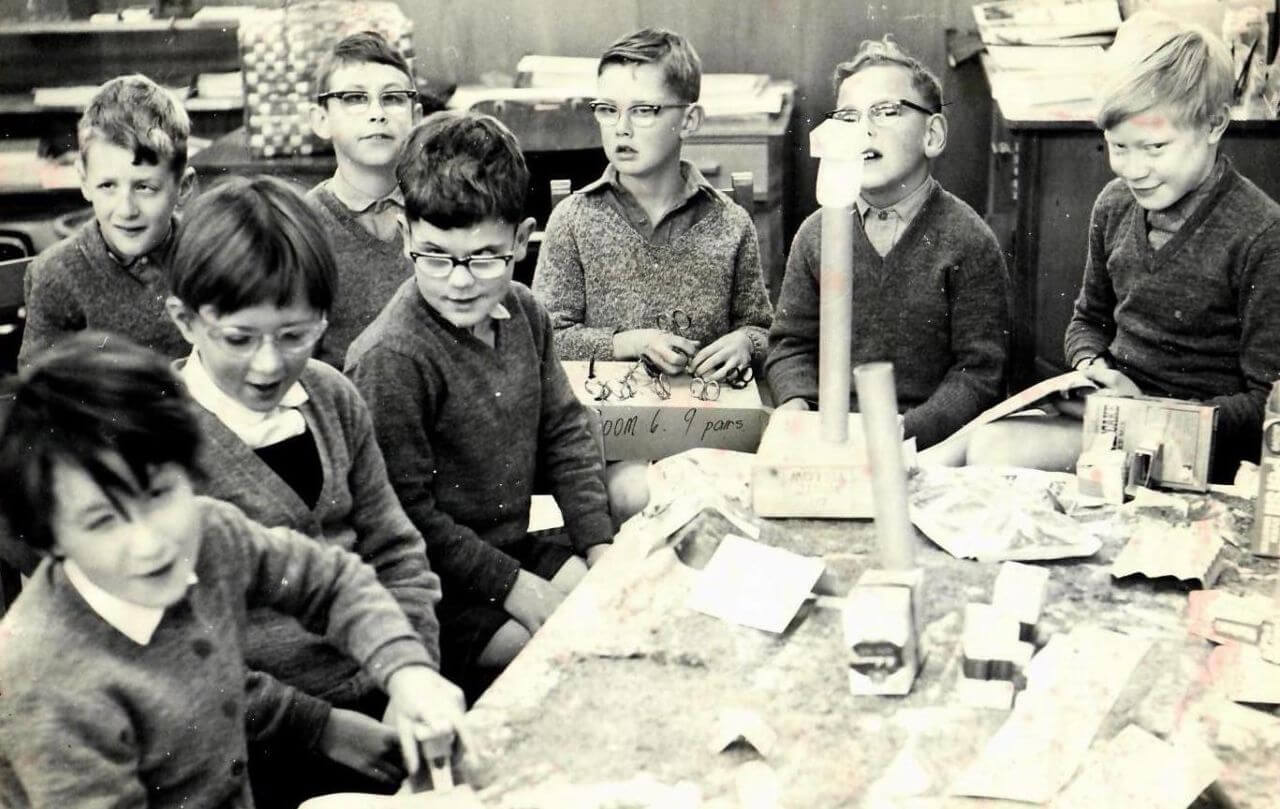Initial services for children and young people who are blind, deafblind or have low vision.
The first education services to blind and low vision children in this country were provided by the Royal New Zealand Foundation for the Blind (RNZFB) at Parnell. In March 1965 Homai College was established on its present site in Manurewa, Auckland with its services continuing to be governed and administered by the RNZFB under the RNZFB Act (1963). The DeafBlind Unit was added to the campus in March 1968 and in 1970 the Adult Rehabilitation Unit was established, before being moved to the Parnell site in 1981. Both the school on the Parnell site and the first decades of Homai reflected the period when children were largely brought together from throughout the country for their schooling.
The establishment of central services in Auckland from 1968
Homai’s first itinerant teacher was appointed in 1968, the first of the teachers that would eventually form the Auckland Visual Resource Centre. The same year the Resource Room at James Cook High School was established, and was later transferred (in the same year) to Manurewa High School. This was followed in 1980 by a Resource Room at Manurewa Intermediate School which closed at the end of 1996. Both the Early Childhood Unit and The Independent Living Skills Centre were opened in July 1981. The latter has since been renamed Kickstart.
The opening of the Low Vision Clinic, 1977
The Ophthalmic/Optometric/Low Vision Clinic was opened in 1977, and is now part of a comprehensive National Assessment Service for students who are vision impaired. The resource room at Rowandale Primary School was established in 1989. This was closed at the end of 1996.
A Change of Name
In 1995 Homai College changed its name to Homai Vision Education Centre. A year later the satellite class at James Cook High School for high-school aged students with vision impairment and additional disabilities was opened and the Early Childhood Unit became a formally licensed Early Childhood Centre. On 1 July 2000 Homai became a state residential special school with its own elected Board of Trustees. At that time it also changed its name to Homai National School for the Blind and Vision Impaired.
Manurewa High School Resource Room
On 1 July 2000 the resource room based at Manurewa High School became the responsibility of the Manurewa High School Board of Trustees. Close links continue to be maintained with both the High School and the Resource Room.
Establishment of Visual Resource Centres
A new service provision was made in the mid-1960s by the Education Department in establishing the first of the Visual Resource Centres, Elmwood, in Christchurch (1964). This grew out of the ‘Sight Saving’ Class at Waltham which had the premise that sight not used was sight saved. (We know differently today.) Based at Elmwood Normal School, students travelled to attend this school from where they could access the specialist services of what today we know as Resource Teachers Vision. Other Centres followed: Otago, Dunedin 1978, Kelburn, Wellington, 1977; Deanwell, Hamilton, 1985; the network of Palmerston North, New Plymouth and Napier, 1989, Tauranga 1991, Nelson 1993, and Gisborne and Invercargill 1996.
From the beginning, Resource Teachers Vision have taken an itinerating role supporting learners in their various education settings. As mainstreaming advanced in the mid-1980s and inclusive education became the schooling model, children no longer travelled to the ‘Host School’ for their education. Rather, the large majority of blind and low vision learners attend their local school learning and achieving alongside their peers. Resource Teachers Vision continue to provide education services across Early Childhood, Primary and Secondary School settings with an aim to access and full participation for every student.
Formation of BLENNZ: Blind & Low Vision Education Network NZ
Documentation from 1956 shows that parents, teachers and the wider blindness education community had long advocated for a single unified system of service provision for children and young people. This came to fruition on January 2005 when Resource Teachers Vision and Support Staff employed in Visual and Sensory Resource Centres came together with staff employed at Homai National School for the Blind and Vision Impaired to form the Blind and Low Vision Education Network NZ (BLENNZ). This has enabled new programme initiatives to be launched, the bringing together of learners across the network for new learning experiences, and to maximize theuse of the network’s expertise and resources. During this period, in line with current legislation, the Early Childhood Centre became a stand alone entity and is administered by the The Homai Early Childhood Centre Education Trust.
BLENNZ is still a young education network, and is still in a developmental phase. We continue to work with the Ministry of Education to find suitable solutions to sustainable staffing, a new model for governance and property development so that learners might have the opportunity to achieve well in education.

